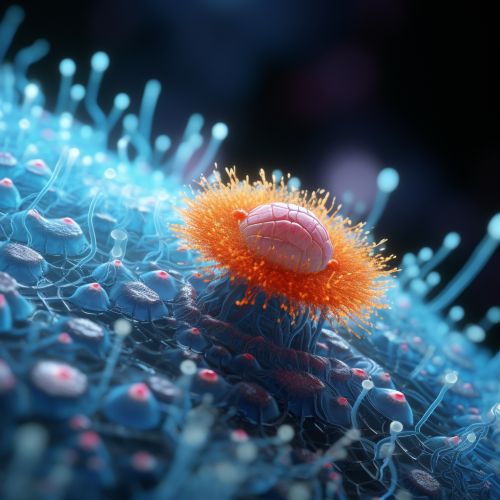Exosome
Overview
Exosomes are a type of extracellular vesicle that are released from cells, particularly when the cells are under stress. They are small, lipid-bound particles that carry a variety of biological molecules, including proteins, lipids, and nucleic acids. Exosomes are involved in a range of biological processes, including cell-cell communication, immune responses, and the spread of disease.
Biogenesis
Exosomes are formed in the endosomal network, a complex system of intracellular compartments that function in the sorting, modification, and transport of proteins. The formation of exosomes begins with the inward budding of the membrane of an endosome, a process that results in the formation of multivesicular bodies (MVBs) within the endosome. These MVBs contain numerous small vesicles, which are the precursors to exosomes. The MVBs then fuse with the plasma membrane, releasing the vesicles into the extracellular environment as exosomes.


Composition
Exosomes are composed of a lipid bilayer membrane that encloses a small volume of cytosol. The membrane of exosomes is enriched in certain lipids that are not commonly found in the plasma membrane, including ceramide and sphingomyelin. These lipids are thought to play a role in the formation and release of exosomes.
The interior of exosomes contains a variety of biological molecules. Proteins within exosomes can include enzymes, signaling molecules, and structural proteins. The protein composition of exosomes can vary depending on the cell type and physiological conditions, and can provide clues about the function of the exosomes.
Exosomes also contain nucleic acids, including both RNA and DNA. The RNA within exosomes can include messenger RNA (mRNA), microRNA (miRNA), and other non-coding RNAs. These RNAs can be transferred to recipient cells and can regulate gene expression within those cells.
Function
Exosomes play a role in a variety of biological processes. One of their primary functions is in cell-cell communication. Exosomes can be taken up by recipient cells, either through fusion with the plasma membrane or through endocytosis. The biological molecules within the exosomes can then influence the behavior of the recipient cell.
Exosomes also play a role in the immune response. They can carry antigens and present them to immune cells, triggering an immune response. They can also carry immunosuppressive molecules and can help to regulate the immune response.
In addition, exosomes are involved in the spread of disease. For example, cancer cells often release large amounts of exosomes, which can influence the behavior of other cells and can promote tumor growth and metastasis. Exosomes can also carry infectious agents, such as viruses, and can contribute to the spread of infection.
Clinical Significance
Due to their role in cell-cell communication and disease, exosomes have potential clinical significance. They could potentially be used as biomarkers for disease. For example, the presence of certain proteins or RNAs within exosomes could indicate the presence of cancer or other diseases.
Exosomes could also potentially be used for therapeutic purposes. For example, exosomes could be loaded with therapeutic molecules and then administered to patients. The exosomes could deliver the therapeutic molecules to target cells, potentially improving the effectiveness of the therapy.
